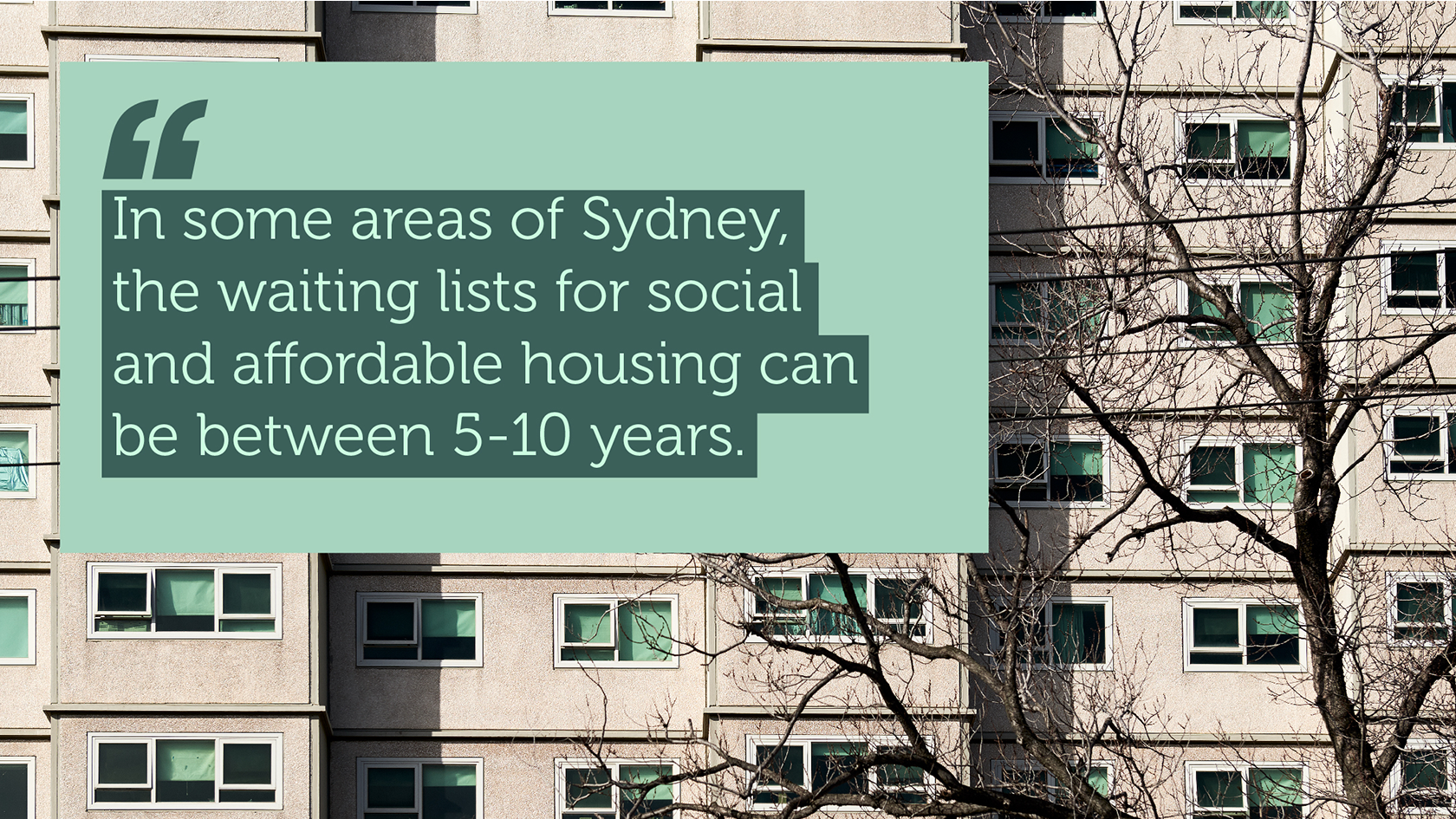“A nation’s greatness is measured by how it treats its weakest members.” Mahatma Ghandi

What impact will COVID-19 have on the desperate homelessness and social housing crisis in Australia? How can this pandemic lead to not only homing all Australians but in building better housing where people can see a road ahead, have hope and regain their joy for life and sense of purpose within their families and wider communities.
Australia’s COVID-19 recovery plan offers the perfect opportunity to stimulate the social housing sector and give it the respect and attention it so desperately needs. With the right stimulus packages from the government, we may be able to not only create local jobs but also draw on the best in quality sustainable design and construction to create healthy, equitable communities on the path to meeting the national shortfall in social housing which is estimated at a horrifying 433,000 dwellings[1].
The government define social housing as secure and affordable housing for people on low incomes with housing needs[2]. It includes public housing which is owned by the state, Indigenous housing and community housing which is managed by non-government organisations.
Back in the day, post-World War 2, public sector agencies are reported to have built more than 15,000 social houses every year. Today we are looking at figures closer to 4000 constructed a year.
Even before COVID-19 according to new data from the 2016 Census of Population and Housing, Australia’s homelessness rate was on the up having increased by 4.6% over the last five years. When we look at people within our lower-income demographic here in Australia, over half of them are forced to live in ‘rental’ distress. As we watch unemployment rise in our COVID world, what does this mean for those most in need within our communities?

So, if you cannot afford the high rents or home loan payments due to a loss of work or a change in circumstances where do you go? How is it possible that Sydney can celebrate its position as one of the most liveable cities in the world with such an inability to home its most vulnerable?
There are so many factors and unforeseen actions that lead to a loss in earnings or financial situations to change and to be pulled from beneath families, leaving them wide open to tragic situations, most of which are out of the control of these residents.
A recent report prepared by Adelaide University for Housing for the Aged Action Group and Social Ventures Australia paints a stark picture of the fastest-growing cohort of people experiencing homelessness in Australia
The report states [3]that up to 405,000 older women risk homelessness without urgent policy reform. The report highlights an unfolding crisis of increasing numbers of older women with nowhere to go, with COVID this situation will have only worsened. Safe, secure and affordable housing and good health and wellbeing are intrinsically linked, particularly in older age.
It was Mahatma Ghandi who said “A nation’s greatness is measured by how it treats its weakest members.” When I reflect on the situation here in Australia I see that we as a nation have a long way to go in giving everyone an equal opportunity at success and happiness. Life in the bubble is not indicative of life in so many communities across Australia,
To combat the housing dilemma, NSW government have committed $36 million to the ‘Together Home’ project, Victoria, announced a $500 million package in May[4], to build 168 new social units and upgrade 23,000 more. In WA we saw the government announce $319 million of a $444 million package, which will go towards building, buying, renovating, and maintaining social housing across the state[5].
Most recently housing organisations are pleading with the federal government to invest in social and community housing as part of the country’s overall COVID recovery plan. Organisations like The Community Housing Industry Association (CHIA), Homelessness Australia, National Shelter and Everybody’s Home have developed a ‘Social Housing Acceleration and Renovation Program’ (SHARP) which aims to build 30,000 homes over the next 4 years[6]. SHARP has estimated the program would require a total government investment of $7.2 billion. This programme pushes for enhancing social housing environmental performance and cut tenants’ energy bills whilst building capacity in not-for-profit CHOs and encouraging innovation in construction quality and design.

Perhaps, just perhaps they could be catalysts for hope and regeneration. A demonstration of our nation’s commitment to our weakest members, by providing healthy, vibrant sustainable communities that are designed for comfort, happiness, community living whilst ensuring the buildings are energy efficient so those on lower incomes are not forced into power poverty.
I am motivated more than ever to help make that happen, let’s not let this opportunity pass us by.
REFERENCES
Reference 1 Reference 2 Reference 3 Reference 4 Reference 5 Reference 6

Claire Bowles
Purpose Director
